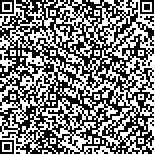本文已被:浏览 1331次 下载 476次
Received:February 10, 2023 Published Online:October 20, 2023
Received:February 10, 2023 Published Online:October 20, 2023
中文摘要: 目的 探讨脉搏指示连续心排出量(PiCCO)监测在糖尿病合并难治性感染性休克治疗中的价值。
方法 选取南京医科大学第二附属医院2017年4月至2020年12月收治的难治性感染性休克患者139例进行回顾性研究,给予PiCCO监测且并存糖尿病(DM+P,n=22)和非糖尿病(NDM+P,n=39)患者为观察组,未予PiCCO监测的并存糖尿病(DM+NP,n=27)和非糖尿病(NDM+NP,n=51)患者为对照组。观察组采用PiCCO监测下目标导向治疗,对照组采用传统集束化治疗。比较四组28 d全因死亡率、ICU住院时间及复苏72 h时急性生理学与慢性健康状况(APACHE)Ⅱ评分和序贯器官衰竭评分(SOFA)。
结果 观察组28 d死亡率和复苏72 h时 SOFA评分与对照组比较差异无统计学意义(P>0.05)。NDM+P组复苏72 h时 APACHE Ⅱ评分明显低于其余三组(P<0.05),ICU住院时间较DM+NP组明显缩短[7(3,11)d vs 12(8,22)d, P<0.05]。
结论 PiCCO监测下目标导向治疗不能降低难治性感染性休克患者的28 d全因死亡率,但可能会改善非糖尿病难治性感染性休克患者复苏72 h时的APACHE Ⅱ评分。
Abstract:ObjectiveTo investigate the value of pulse indicator continuous cardiac output (PiCCO) monitoring in the treatment of diabetes patients with refractory septic shock.
Methods A total of 139 patients with refractory septic shock admitted to the Second Affiliated Hospital of Nanjing Medical University from April 2017 to December 2020 were selected for a retrospective study. Patients with diabetes (DM+P, n=22) and non-diabetes (NDM+P, n=39) who received PiCCO monitoring were selected as the observation group, and patients with diabetes (DM+NP, n=27) and non diabetes (NDM+NP, n=51) who did not receive PiCCO monitoring were selected as the control group. The observation group was treated with goal-directed therapy under PiCCO monitoring, while the control group was treated with traditional cluster therapy. The 28-day all-cause mortality, the duration of ICU stay, and acute physiology and chronic health evaluation (APACHE) Ⅱ scores and sequential organ failure score (SOFA) at 72 hours of resuscitation were compared among four groups.
Results There was no statistically significant difference between the observation group and the control group in terms of mortality at 28 days and SOFA score at 72 hours of resuscitation (P>0.05). The APACHE Ⅱ score of the NDM+P group was significantly lower than that of the other three groups at 72 hours of resuscitation (P<0.05), and the duration of ICU stay was shorter than that of the DM+NP group [7(3,11)d vs 12(8,22)d, P<0.05].
Conclusion Goal-directed therapy under PiCCO monitoring can not reduce the 28-day all-cause mortality of diabetes patients with refractory septic shock, but may improve the APACHE Ⅱ score of non-diabetes patients with refractory septic shock at 72 h of resuscitation.
keywords: Refractory septic shock Diabetes Pulse indicator continuous cardiac output Acute physiology and chronic health evaluation Ⅱ scores Sequential organ failure assessment
文章编号: 中图分类号: 文献标志码:A
基金项目:江苏省卫健委老年健康科研项目(LR2022003);江苏省卫健委医学科研项目(M2020045);南京医科大学第二附属医院“789”卓越人才培养项目(789ZYRC202070317)
| Author Name | Affiliation |
| HE Wei, SUN Liqun | Department of Critical Care Medicine, The Second Affiliated Hospital of Nanjing Medical University, Nanjing, Jiangsu 210011, China |
| Author Name | Affiliation |
| HE Wei, SUN Liqun | Department of Critical Care Medicine, The Second Affiliated Hospital of Nanjing Medical University, Nanjing, Jiangsu 210011, China |
引用文本:
